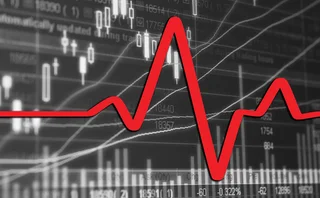
Regulatory wrangles in the CDS market
Regulation is likely to have a significant impact on the CDS market in the coming months, with moves to central clearing and an exchange-traded model in the offing. But how will it affect trading activity by buy-side institutions?

In the wake of the Lehman Brothers collapse in September 2008, and the subsequent bailout of US insurer AIG, credit derivatives attracted the ire of policymakers. Credit default swaps were blamed for the build-up in systemic risk that contributed to the financial crisis. Warren Buffett’s famous description of derivatives as “financial weapons of mass destruction” gained common currency.
A financial reform package – the Dodd-Frank Wall Street Reform and Consumer Protection Act – was announced by the Obama administration in May 2009 and signed into law in July this year.
It includes measures requiring the central clearing of CDS – intended to significantly reduce the counterparty risk that accompanies bilateral contracts, by transferring it to a central clearing house – and ultimately a move to an exchange-traded model to encourage greater market transparency. Similar measures have been proposed in Europe, under the aegis of the European Commission and its recently formed European Securities and Markets Authority (ESMA).
Big Bang and Small Bang
The so-called ‘Big Bang’ and ‘Small Bang’ protocols, implemented by the International Swaps and Derivatives Association in April and July of 2009 were intended to promote the standardisation of the over-the-counter CDS market, and seen as preliminary steps towards the new regime. The measures included stipulations on fixed coupon payments on CDS of either 100 basis points (for investment grade) or 500bp (for speculative grade), standard quarterly settlement dates, and standardised accrual terms.
Dinesh Pawar, head of credit flow trading at Aviva Investors in London, says the changes have led to CDS contracts becoming more fungible, meaning there is now greater scope for the exchange of contracts between different parties. That has had a beneficial effect on market liquidity over the last year.
“The thinking behind the protocols was to improve the overall efficiency of the market – for example, the ability to match trades, for dealers and investors to be able to manage notional exposures – with a view to eventually moving CDS onto an exchange-based model. The key aim was to improve the overall mechanics and functionality of CDS,” Pawar says.
The standardisation of the market seems to have had the desired effect. Despite a fall in overall volume since the beginning of 2010 – Axa Investment Managers estimates a 50% drop-off in the monetary volume of all trades – the CDS market has stayed liquid.
“Standardisation of contracts helped a lot in terms of market functioning. People would have thought the CDS market would become illiquid because of the European sovereign debt crisis, but in reality it stayed liquid: trades were being executed and dealers were showing two-way markets. Spreads traded wider, which was expected as people absorbed the flow of news and data,” Pawar adds.
Lee Sanders, a CDS trader and head of FX execution at Axa IM in London, agrees good liquidity in the CDS space has meant the market has, for the most part, avoided the volatility that roiled the underlying credits.
“The volatility in CDS has not necessarily been as bad as the volatility in the underlying at times, as there’s more liquidity in there,” he says. “If you wanted to get rid of $5 billion of index CDS, it would be possible within a week in the right market. If you wanted to do $5 billion of single-name bonds, that would be a lot harder.”
The euro crisis might not have had a marked effect on liquidity, but it has influenced trading patterns. Jochen Felsenheimer, head of credit at Assenagon Asset Management in Munich, says there has been more CDS trading linked to European sovereign debt, as investors increasingly look to hedge government risk.
“We saw a significant blowout on France’s CDS earlier this year, for example,” he says. “The five-year French CDS spread traded close to 100bp at one point [99.97bp on June 8]. It has since tightened back again [trading at 76.56bp on September 13], but there is obviously now much more incentive to hedge government risk than there was before the crisis. If you look at the official data there is much more activity on sovereign CDS than there was last year.”
According to the Depository Trust & Clearing Corporation, which operates the main central trade repository on CDS – the Trade Information Warehouse – the gross notional amounts written on European sovereign CDS increased 55% between March 2009 and March 2010, from $490.9 billion to $761.8 billion. Gross notional CDS on Greece increased 95%, but Europe’s perceived safe havens also saw increased trading: the gross notional of CDS referencing France increased by 45%, and Germany by 44%.
Naked short-selling
The increased trading on sovereign CDS has led to claims that such activity contributed to the severity of the crisis. Traders in ‘naked’ CDS – which lack exposure to the underlying bond – have been blamed for mounting speculative “attacks” on Europe’s peripheral sovereigns, ratcheting up their borrowing costs and exacerbating their fiscal problems.
The German financial regulator, BaFin, announced a unilateral ban on naked credit default swaps on May 19, arguing that CDS trading in large volumes at a time of extreme volatility in debt securities would “endanger the stability of the entire financial system”.
Felsenheimer thinks the move was ill conceived and politically motivated. “I have many concerns regarding CDS regulation at the moment, because most of the time it is wrong,” he says. “There’s always a political aspect to the decision, but the German government’s CDS ban just doesn’t make sense at all. From a regulatory perspective, the idea that CDS is an instrument through which speculators can attack countries is simply wrong.”
Felsenheimer says the move has had little effect on the CDS market, however, as the bulk of CDS trading is executed in New York and London. Pawar agrees the impact of BaFin’s ban has been muted.
“Initially it was a shock to the market when that happened, because no-one was expecting it. But ultimately it was Germany-centric and didn’t really affect the rest of Europe. Spreads did blow out for a time, but that was because of speculation other European countries would follow suit. I’m not expecting that. If other countries thought this was a serious risk they would have done it already,” he says.
One piece of regulation that is likely to have more of an impact is restrictions on proprietary trading by banks. The controversial ‘Volcker rule’, enacted as part of the Dodd-Frank financial reform act in the US on July 21, is intended to prevent financial institutions from making risky investment decisions for their own, rather than their clients’, benefit. Though watered down somewhat from the original proposal in January, the law is already starting to have an impact on liquidity, restricting traders’ room for manoeuvre.
“Bank prop desks were one of the biggest contributors to liquidity in the market,” says Pawar. “The unique point about such operations was their ability to take sizeable views with the skill set required to hedge their risk through a variety of instruments. Like in any market, when volumes or liquidity evaporate, what happens is the market tends to become more polarised.
“When markets are thin they react more aggresively to small changes in prices or spread moves. So that’s one thing we’ve definitely noticed and will continue to see more of. The market is sensitive to large trades, and a lot of trades become crowded very quickly: getting others to take that balance sheet risk is more difficult. Overall it’s a different environment now,” Pawar adds.
Felsenheimer thinks the restrictions are misguided in that they serve to perpetuate an uncompetitive market where large banks predominate.
“The real problem in the CDS market is that, as big as it is, there are 10 players who dominate. I’d estimate about 10 accounts in the global CDS market are responsible for 75% of the turnover, and that’s a conservative estimate. Banks are too strong with respect to market power. You have to try to get more banks active in the CDS market to make it more efficient and competitive. What’s happening is that regulators are doing exactly the opposite,” he argues.
If restrictions on bank prop trading are affecting the CDS market now, the impact of the proposed regulation on central clearing is likely to have an even greater impact on trading. “The big change on the horizon is a comprehensive regulatory change to the whole market, where everybody has to clear every CDS trade through a clearing house, no matter who you are – a market professional, an end-user, a corporation, whatever,” says Sanders at Axa IM. “I think that’s going to drive the industry for the next few years. Going forward, the defining thing will be regulation, without a shadow of a doubt.”
Cost considerations
One concern buy-side market participants have is that while central clearing may reduce counterparty risk, it will also make transactions more expensive – perhaps prohibitively so.
“It’s going to potentially cost so much money for banks to give these trades up, because it might be done posting gross margin rather than net margin. The increased cost might deter some from using CDS cleared through a clearing house. It may push them back into the underlying [credits] or other alternatives. If it becomes more expensive to margin the business, and you’re not doing a lot of volume, then it becomes high cost with little return, and you’d have to question whether there is a future in doing this,” Sanders adds.
Nick Robinson, London-based head of fixed income trading at Schroders, estimates central clearing for the bulk of CDS trades will begin in Europe “at the end of 2011 at the latest”, and earlier in the US. He agrees with Sanders that operational costs may increase as a result.
“Clearly, central clearing gives certain benefits in terms of counterparty risk,” he says. “At the moment, when you enter into an OTC swap you’re exposed to the counterparty for the duration of that swap’s life, and you may have problems if people don’t want to face that entity when you’re trying to unwind that trade. A central clearer removes that risk, so it’s a definitive benefit in terms of the reduction of counterparty risk to users.
“So you do get a benefit, but it comes with a cost. It may be that cost is sufficient that the balance of risk/reward becomes finer for certain trades, so you may find some people who were happy to place trades based on certain risk/reward parameters won’t do those trades any more under a central clearing authority. It’s early days, so no-one can say with any certainty that it will happen, but it’s becoming more and more apparent that the operational costs will increase,” Robinson adds.
Assenagon’s Felsenheimer believes proper collateral management – where each party posts collateral to show the other they can meet their contractual obligations – negates the need for central counterparty clearing.
“All the people trading CDS [OTC] have the mechanisms in place to trade it efficiently. What is the incentive to move to a clearing house, if you have collateral management? We have collateral management with all our counterparties. We do a daily collateral exchange. If you can do that directly with a counterparty what’s the need for a clearing house? Economically there is no difference,” he says.
Robinson, meanwhile, queries the benefits of an exchange-traded model for credit derivatives – designed to improve transparency in the market – which is the other pole of the reform package. “It’s not necessarily as simple as ‘exchange trading better, OTC worse’. Transparency ought to improve on the exchange-traded model, that’s true, but then again you don’t always want transparency. If you’ve got a large trade to do, and you want market-makers to commit capital and to take the other side of the trade, they don’t necessarily want the whole of the market to see that trade and know where they committed capital. Sometimes credit transparency can hinder liquidity provision,” he says.
Others welcome the changes, however, believing they will foster a more standardised, transparent market.
“People on the whole aren’t shunning these changes. They see [the move to an exchange model] as an efficient way to take down risk, and an efficient way to put on risk. We’re seeing the natural evolution of a product that started off on an OTC basis. It just shows the market is maturing in credit. That’s the most important thing to take away. It can only be a positive,” says Pawar.
Only users who have a paid subscription or are part of a corporate subscription are able to print or copy content.
To access these options, along with all other subscription benefits, please contact info@risk.net or view our subscription options here: http://subscriptions.risk.net/subscribe
You are currently unable to print this content. Please contact info@risk.net to find out more.
You are currently unable to copy this content. Please contact info@risk.net to find out more.
Copyright Infopro Digital Limited. All rights reserved.
You may share this content using our article tools. Printing this content is for the sole use of the Authorised User (named subscriber), as outlined in our terms and conditions - https://www.infopro-insight.com/terms-conditions/insight-subscriptions/
If you would like to purchase additional rights please email info@risk.net
Copyright Infopro Digital Limited. All rights reserved.
You may share this content using our article tools. Copying this content is for the sole use of the Authorised User (named subscriber), as outlined in our terms and conditions - https://www.infopro-insight.com/terms-conditions/insight-subscriptions/
If you would like to purchase additional rights please email info@risk.net
More on Credit markets
Liquidnet sees electronic future for grey bond trading
TP Icap’s grey market bond trading unit has more than doubled transactions in the first quarter of 2024
Single-name CDS trading bounces back
Volumes are up as Covid-driven support fuels opportunity for traders and investors
Podcast: Richard Martin on improving credit migration models
Star quant proposes a new model for predicting changes in bond ratings
CME to pass on Ice CDS administration charges
Clearing house to hike CDS index trade fees from July after Ice’s determinations committee takeover
Buy side fuels boom in single-name CDS clearing
Ice single-name CDS volumes double year on year following switch to semi-annual rolls
Ice to clear single-name bank CDSs from April 10
US participants will be able to start clearing CDSs referencing Ice clearing members
iHeart CDS saga sparks debate over credit rules
Trigger decision highlights product's weaknesses, warns Milbank’s Williams
TLAC-driven CDS index change tipped for September
UK and Swiss bank Holdco CDSs likely inclusions in next iTraxx index roll, say strategists







